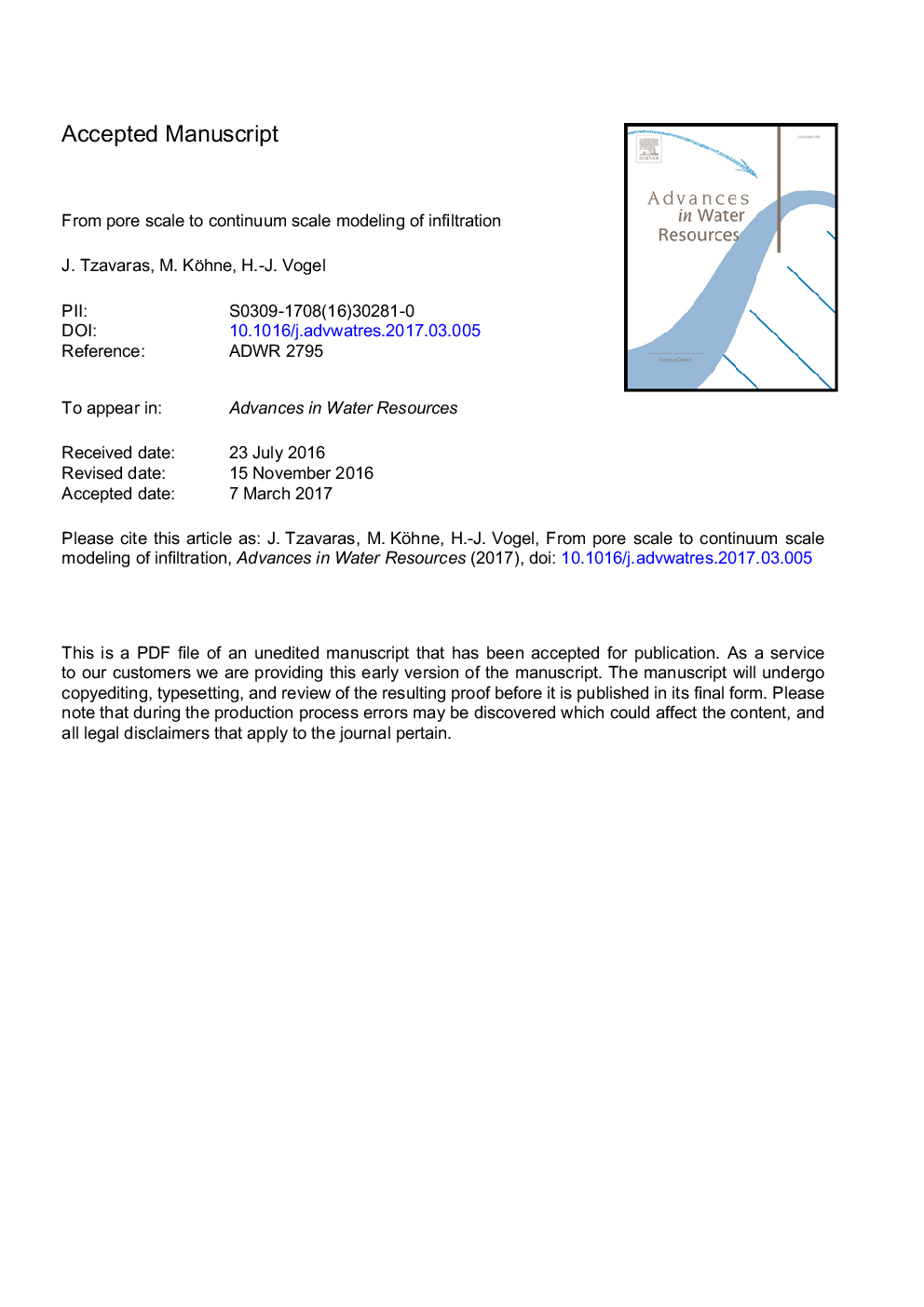| Article ID | Journal | Published Year | Pages | File Type |
|---|---|---|---|---|
| 5763801 | Advances in Water Resources | 2017 | 25 Pages |
Abstract
Water infiltration in soil at the continuum scale is typically modeled using Richards equation. This requires effective material properties, the water retention characteristic and the unsaturated hydraulic conductivity function. During infiltration the gaseous phase is replaced by water within a complex porous structure. This produces phenomena such as irregular infiltration fronts, hydraulic non-equilibrium and hysteresis which are ultimately related to pore scale processes. In this work we simulate infiltration at the pore scale using a pore network model where the pore structure can be adapted to real structures in terms of pore size distribution and pore topology. We compare the horizontally averaged dynamics of water content and water potential to the results obtained from Richards' equation. This provides evidence that the pore network representation is consistent with the typical macroscopic dynamics at the continuum scale. However, assuming immiscible and incompressible fluid phases leads to unrealistic gas entrapment in the network model. We conclude that mechanisms leading to a release of trapped gas phase in natural porous media are difficult to represent in a pore network model. Yet, the proposed pore scale approach has the potential to study fundamental relations between pore structure and macroscopic phenomena not only for drainage but also for infiltration.
Related Topics
Physical Sciences and Engineering
Earth and Planetary Sciences
Earth-Surface Processes
Authors
J. Tzavaras, M. Köhne, H.-J. Vogel,
